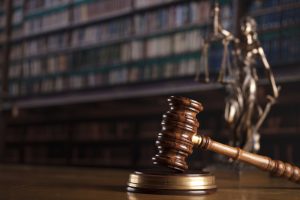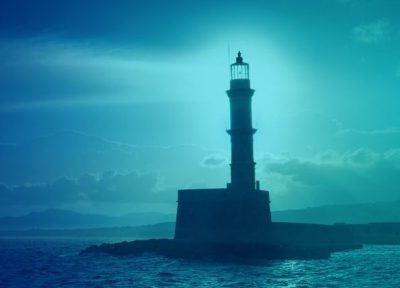The Virginia Judges & Lawyers Assistance Program: History & Evolution of Services to the Legal Profession
Early Life
 In 1984, the Virginia State Bar (VSB) and The Virginia Bar Association (VBA) established a necessary committee to study the issue of substance abuse in the Virginia legal profession. Chaired by E. Eugene Luther, the committee undertook a survey of the bench and Bar. The results of that survey indicated that between 12 and 14 percent of the Virginia legal profession suffered from some form of substance abuse.
In 1984, the Virginia State Bar (VSB) and The Virginia Bar Association (VBA) established a necessary committee to study the issue of substance abuse in the Virginia legal profession. Chaired by E. Eugene Luther, the committee undertook a survey of the bench and Bar. The results of that survey indicated that between 12 and 14 percent of the Virginia legal profession suffered from some form of substance abuse.
The committee began looking at program structure in other states to make decisions about whether services should be confidential and non-disciplinary or whether to make services an adjunct of the disciplinary arm of the VSB. The committee ultimately decided that greater potential for assisting lawyers would result from a non-disciplinary program. The VSB endorsed the program and withdrew from active participation so that a non-disciplinary approach could be assured.
The VBS offered to allow the program to operate under its organizational structure as a committee with its own bylaws and a measure of autonomy. E. Eugene Luther, and other founding members, chose the name of Lawyers Helping Lawyers (LHL). The VBA and the Virginia Law Foundation (VLF) provided funding for the program in its formative stages while the VBA also provided staff and clerical support.
The program began providing services in early 1986 with guidance from St. John’s hospital, which also permitted the use of its hotline for crisis intervention and inquiry.
Financial Support
The program functioned entirely due to volunteer effort of committee members until December 1991:
- Tom Casselton was hired part time as director and was with LHL from 1992 through 1994.
- The American National Lawyers Insurance Reciprocal (ANLIR) began providing financial support.
- In 1995, the VSB council voted to substantially increase their level of funding to LHL over a five year period.
These efforts allowed the committee to hire Susan Pauley as its first full-time director in October of 1995. Due to the size and geographical diversity of Virginia, the Substance Abuse Committee recruited and relied on trained volunteer members, many of whom met in local committees across the state, to help carry out the services of the program.
Offering Additional Services
 In 1993, the program formally adopted a model monitoring contract, which is available for use by employers, courts, the disciplinary system and the Board of Bar Examiners’ Character and Fitness Committee. In addition to monitoring, these services became available:
In 1993, the program formally adopted a model monitoring contract, which is available for use by employers, courts, the disciplinary system and the Board of Bar Examiners’ Character and Fitness Committee. In addition to monitoring, these services became available:
- Consultation
- Educational services
- Intervention assistance
- Peer support
- Support groups
- Treatment referral
Various studies highlighted the troubling incidence of depression and suicide in the legal profession. A revised mission expanded the disabilities LHL handled to include depression, life trauma and other emotional impairments.
Becoming a Non-Stock Virginia Corporation
Enlarging the scope of services required the program to increase its staff and expand it space. After discussions with the VBA leadership and other interested parties, The Substance Abuse Committee recommended that LHL become an independent entity. With the blessings of VBA, VBS, the Virginia Trial Lawyers Association and the Virginia Board of Bar Examiners, LHL became a non-stock Virginia Corporation in November of 2002:
- A Board of Directors was formed in January of 2003
- The program moved into its current location in May of 2003
- 501(c)3 status was obtained
- In January of 2004, Jim Leffler began work as coordinator of mental health services
Name Change & Current Day Operations
 Tim Carroll became the Executive Director in 2015. Shortly after, the landmark ABA/Hazeldon Betty Ford Foundation Collaborative Study was released, indicating eye-opening rates of alcohol and mental health issues among the legal profession. In response to that survey, we developed a new strategic business plan titled, “The Lighthouse Plan.”
Tim Carroll became the Executive Director in 2015. Shortly after, the landmark ABA/Hazeldon Betty Ford Foundation Collaborative Study was released, indicating eye-opening rates of alcohol and mental health issues among the legal profession. In response to that survey, we developed a new strategic business plan titled, “The Lighthouse Plan.”
In 2017, the ABA released The Path to Lawyer Well-Being Report by the National Task Force on Lawyer Well-Being. The Supreme Court of Virginia, led by Chief Justice Donald W. Lemons, immediately formed a Committee on Lawyer Well-Being, chaired by Justice William C. Mims, to study the national report and to make recommendations for Virginia.
In 2018, The Committee Report A Profession At Risk was released, making recommendations that significantly affected our program.The name changed from Lawyers Helping Lawyers to the Virginia Judges and Lawyers Assistance Program because VJLAP outlines a more accurate description of the organization and who we serve. The organization has always worked with members of the judiciary, but we wanted to put more emphasis on this to ensure we weren’t alienating anyone.
Since 2003, VJLAP has been performing thorough and professional assessments of individuals that are referred to the program. We have developed a number of support groups around the state to provide more help to additional members of the legal community. Currently, there are support groups in Alexandria, Charlottesville, Richmond, Roanoke, Virginia Beach and Williamsburg. We have also increased our outreach to state-wide bar associations and offer 12-step support groups at many of the state-wide meetings.
